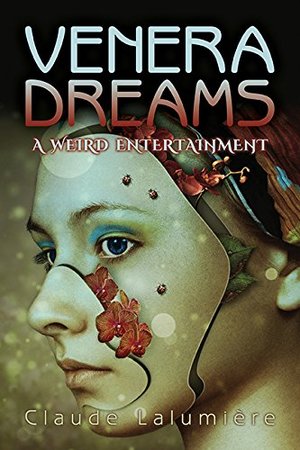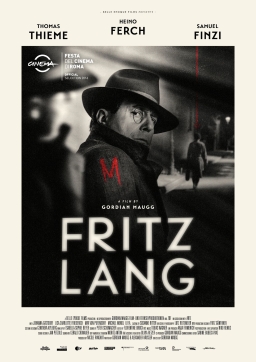Sublimity, Decadence, and Pulp: Venera Dreams, by Claude Lalumière
 There’s magic in the linked short-story form. A series of interrelated short fictions can examine a setting from many angles, build a character through a range of perspectives, establish a set of overlapping histories, and create a whole world with multiple centres: many heroes, many protagonists, together making a world bigger than can live in any one of their stories. Claude Lalumière’s Venera Dreams is the most recent example of the form I’ve seen, an exploration of the past (and future) of a mysterious island in the Mediterranean not far from Italy that’s home to a range of powerful and subversive artists — as well as the mysterious sacred spice vermilion, and a variety of myths and goddesses including the fabled Scheherazade.
There’s magic in the linked short-story form. A series of interrelated short fictions can examine a setting from many angles, build a character through a range of perspectives, establish a set of overlapping histories, and create a whole world with multiple centres: many heroes, many protagonists, together making a world bigger than can live in any one of their stories. Claude Lalumière’s Venera Dreams is the most recent example of the form I’ve seen, an exploration of the past (and future) of a mysterious island in the Mediterranean not far from Italy that’s home to a range of powerful and subversive artists — as well as the mysterious sacred spice vermilion, and a variety of myths and goddesses including the fabled Scheherazade.
I know Lalumière well (so well I’d never normally refer to him by his last name, but such is the nature of a book review), and interviewed him for Black Gate seven years ago; as he was already engaged on the Venera Dreams project back then, the interview’s surprisingly relevant. He’s edited or co-edited seven anthologies, and had two collections of his own short fiction published (Objects of Worship in 2009 and Nocturnes and Other Nocturnes in 2013). In 2011 his book The Door to Lost Pages came out, a set of linked stories revolving around a magical bookshop. That store tuns up in Venera Dreams, notably in the opening story, but the first book is in no way necessary reading for this one.
The subtitle of Venera Dreams proclaims the collection “A Weird Entertainment,” and that’s accurate in just about every sense. It is strange and it is entertaining. But it’s weird in a more profound way; weird in the way of the pulps, in the way of Weird Tales. And it is an entertainment in the way the first English version of the One Thousand And One Nights called itself The Arabian Nights’ Entertainment. It’s a series of reveries about storytelling and art, about ecstasy and myth, about cities and history and yearning. About Venera the venerable: about venery and veneration.
 With another year’s worth of Fantasia reviews now finished, I thought I’d take the time once again to look back at what I saw and write a general overview of the films as a whole. Doing so this year, though, leads to thoughts about film on a slightly larger scale than just Fantasia alone.
With another year’s worth of Fantasia reviews now finished, I thought I’d take the time once again to look back at what I saw and write a general overview of the films as a whole. Doing so this year, though, leads to thoughts about film on a slightly larger scale than just Fantasia alone. After the Fantasia festival had officially concluded I still had three movies to watch. During the festival I’d requested links to view screening copies of three films I couldn’t see in theatres due to schedule conflicts, but it wasn’t until Fantasia ended that I had time to sit down and watch them. These movies were a Japanese comedy-drama called Japanese Girls Never Die (also released under the English title Haruko Azumi Is Missing, in romanised Japanese Azumi Haruko wa yukue fumei); a Thai historical martial-arts movie called Broken Sword Hero (also Legend of the Broken Sword Hero, from the romanised original Thong Dee Fun Khao); and a Chinese blockbuster historical war movie called God of War (Dang kou feng yun, now on Netflix). They made for an interesting mix.
After the Fantasia festival had officially concluded I still had three movies to watch. During the festival I’d requested links to view screening copies of three films I couldn’t see in theatres due to schedule conflicts, but it wasn’t until Fantasia ended that I had time to sit down and watch them. These movies were a Japanese comedy-drama called Japanese Girls Never Die (also released under the English title Haruko Azumi Is Missing, in romanised Japanese Azumi Haruko wa yukue fumei); a Thai historical martial-arts movie called Broken Sword Hero (also Legend of the Broken Sword Hero, from the romanised original Thong Dee Fun Khao); and a Chinese blockbuster historical war movie called God of War (Dang kou feng yun, now on Netflix). They made for an interesting mix. On the last day of the 2017 Fantasia film festival I planned to watch three movies. First, at the De Sève Theatre, Indiana: a movie about a pair of ghost-breakers in the Midwest who may or may not deal with actual paranormal events. Second, I’d go to the festival’s screening room, where I’d see a dark psychological thriller called Fashionista. Finally, I’d close out the festival with a screening of a restored version of Dario Argento’s classic 1977 horror film Suspiria.
On the last day of the 2017 Fantasia film festival I planned to watch three movies. First, at the De Sève Theatre, Indiana: a movie about a pair of ghost-breakers in the Midwest who may or may not deal with actual paranormal events. Second, I’d go to the festival’s screening room, where I’d see a dark psychological thriller called Fashionista. Finally, I’d close out the festival with a screening of a restored version of Dario Argento’s classic 1977 horror film Suspiria. Tuesday, August 1, was the next-to-last day of Fantasia. I had three films I wanted to see as the festival raced to its end, all at the De Sève Theatre. Lu Over the Wall (Yoake Tsugeru Lu no uta) was an animated young person’s adventure about indie rock and mermaids, from the mind of Masaaki Yuasa. Spoor (Pokot) was a Polish-Czech co-production of a mystery-horror film about animals that may or may not be turning against human beings. And Nomad (Göçebe) was a Turkish science-fiction/fantasy film that promised mythic overtones.
Tuesday, August 1, was the next-to-last day of Fantasia. I had three films I wanted to see as the festival raced to its end, all at the De Sève Theatre. Lu Over the Wall (Yoake Tsugeru Lu no uta) was an animated young person’s adventure about indie rock and mermaids, from the mind of Masaaki Yuasa. Spoor (Pokot) was a Polish-Czech co-production of a mystery-horror film about animals that may or may not be turning against human beings. And Nomad (Göçebe) was a Turkish science-fiction/fantasy film that promised mythic overtones. On Monday, July 31, I had three movies I wanted to see at the Fantasia Festival. First up was a surreal Japanese animated comedy, Night Is Short, Walk On Girl (Yoru wa Mijikashi Arukeyo Otome) in the De Sève Theatre. Then I’d stay at the De Sève to see an Italian documentary, Deliver Us (the English translation of the Latin title Libera Nos), about real-life exorcisms. The day would wrap up in the Hall Auditorium with a screening of Takashi Miike’s adaptation of the best-selling supernatural samurai manga Blade of the Immortal (Mugen no Junin). It looked, all told, like a lovely day.
On Monday, July 31, I had three movies I wanted to see at the Fantasia Festival. First up was a surreal Japanese animated comedy, Night Is Short, Walk On Girl (Yoru wa Mijikashi Arukeyo Otome) in the De Sève Theatre. Then I’d stay at the De Sève to see an Italian documentary, Deliver Us (the English translation of the Latin title Libera Nos), about real-life exorcisms. The day would wrap up in the Hall Auditorium with a screening of Takashi Miike’s adaptation of the best-selling supernatural samurai manga Blade of the Immortal (Mugen no Junin). It looked, all told, like a lovely day. I ran up the steps in the Hall Building, hurrying from the basement where I’d just seen
I ran up the steps in the Hall Building, hurrying from the basement where I’d just seen  Sunday, July 30, was going to be a big day. I had four movies I hoped to see, some of them scheduled so tightly I wasn’t sure I could get to all of them in time despite the convenient proximity of the Fantasia theatres one to another. Still, I at least knew I’d start my day in the D.B. Clarke Theatre, where I would see Geek Girls, a documentary by Gina Hara.
Sunday, July 30, was going to be a big day. I had four movies I hoped to see, some of them scheduled so tightly I wasn’t sure I could get to all of them in time despite the convenient proximity of the Fantasia theatres one to another. Still, I at least knew I’d start my day in the D.B. Clarke Theatre, where I would see Geek Girls, a documentary by Gina Hara. There were two screenings I wanted to attend at the Fantasia Festival on Saturday, July 29. First was the Russian science-fiction film Attraction (Prityazhenie). After that was a triple-bill of animated shorts: “Valley of White Birds,” from China; “Scarecrow Island,” from Korea; and “Cocolors,” from Japan. All together, a promising day of fantastic imagery on the big screen in the 400-seat D.B. Clarke Theatre. (In addition, a long short film preceded Attraction, “Past & Future Kings”; as it happens I know some of the local creators, and so feel it would be inappropriate to write about the movie here.)
There were two screenings I wanted to attend at the Fantasia Festival on Saturday, July 29. First was the Russian science-fiction film Attraction (Prityazhenie). After that was a triple-bill of animated shorts: “Valley of White Birds,” from China; “Scarecrow Island,” from Korea; and “Cocolors,” from Japan. All together, a promising day of fantastic imagery on the big screen in the 400-seat D.B. Clarke Theatre. (In addition, a long short film preceded Attraction, “Past & Future Kings”; as it happens I know some of the local creators, and so feel it would be inappropriate to write about the movie here.) On Friday, July 28, I had two films on my schedule at the Fantasia Festival. The first was a German period crime film with biographical aspects, a movie called Fritz Lang that imagined the great director of the title mixed up with the killings that would shape his now-classic film M. The second was a screening of George Romero’s 1973 film The Crazies, arranged quickly by the festival’s organizers as a tribute following Romero’s death only 12 days before. Together the movies would make for a day that, to me, exemplified much of what is best in Fantasia: a profound appreciation of film history of every kind, mixed with challenging genre artistry.
On Friday, July 28, I had two films on my schedule at the Fantasia Festival. The first was a German period crime film with biographical aspects, a movie called Fritz Lang that imagined the great director of the title mixed up with the killings that would shape his now-classic film M. The second was a screening of George Romero’s 1973 film The Crazies, arranged quickly by the festival’s organizers as a tribute following Romero’s death only 12 days before. Together the movies would make for a day that, to me, exemplified much of what is best in Fantasia: a profound appreciation of film history of every kind, mixed with challenging genre artistry.